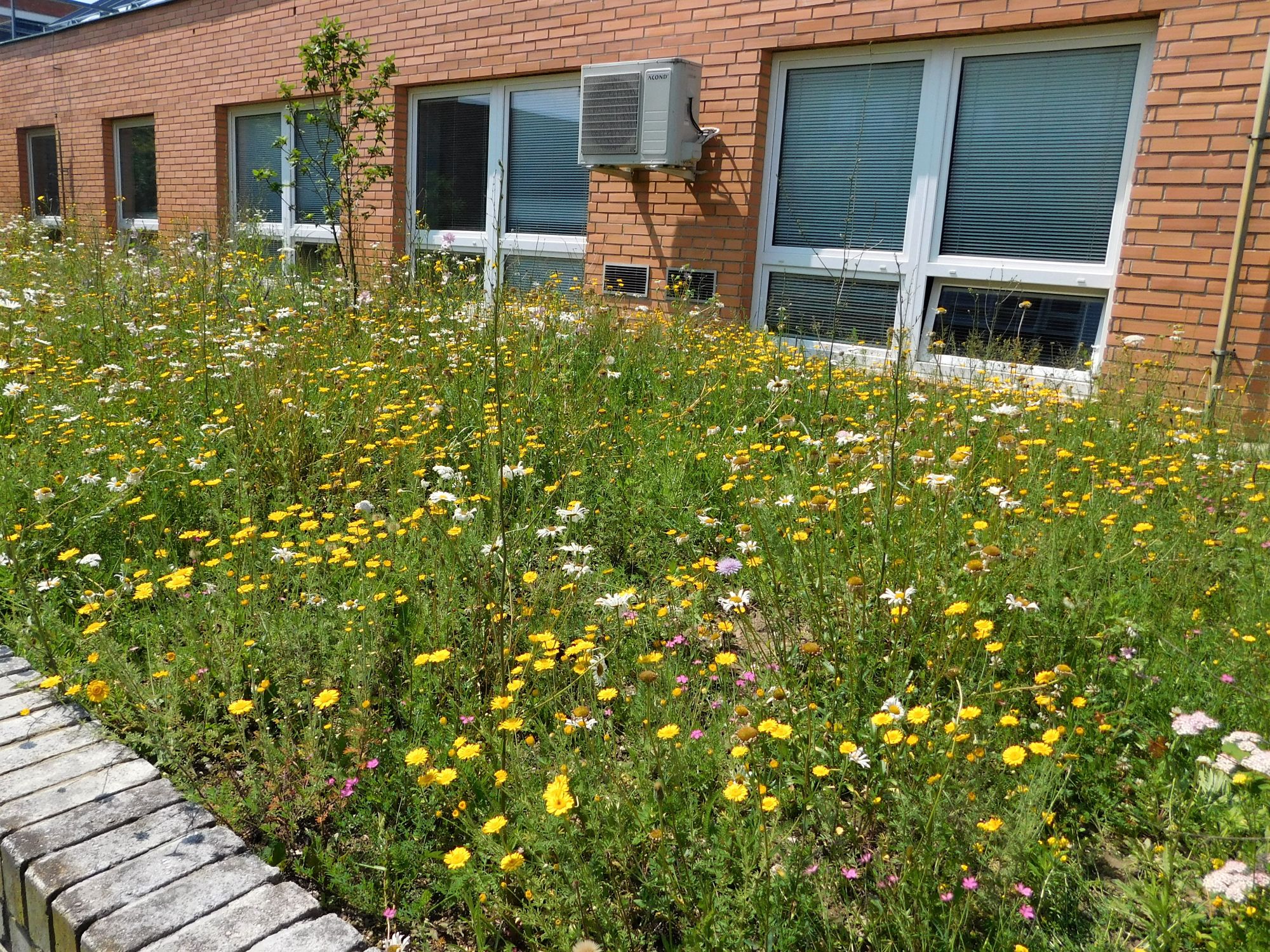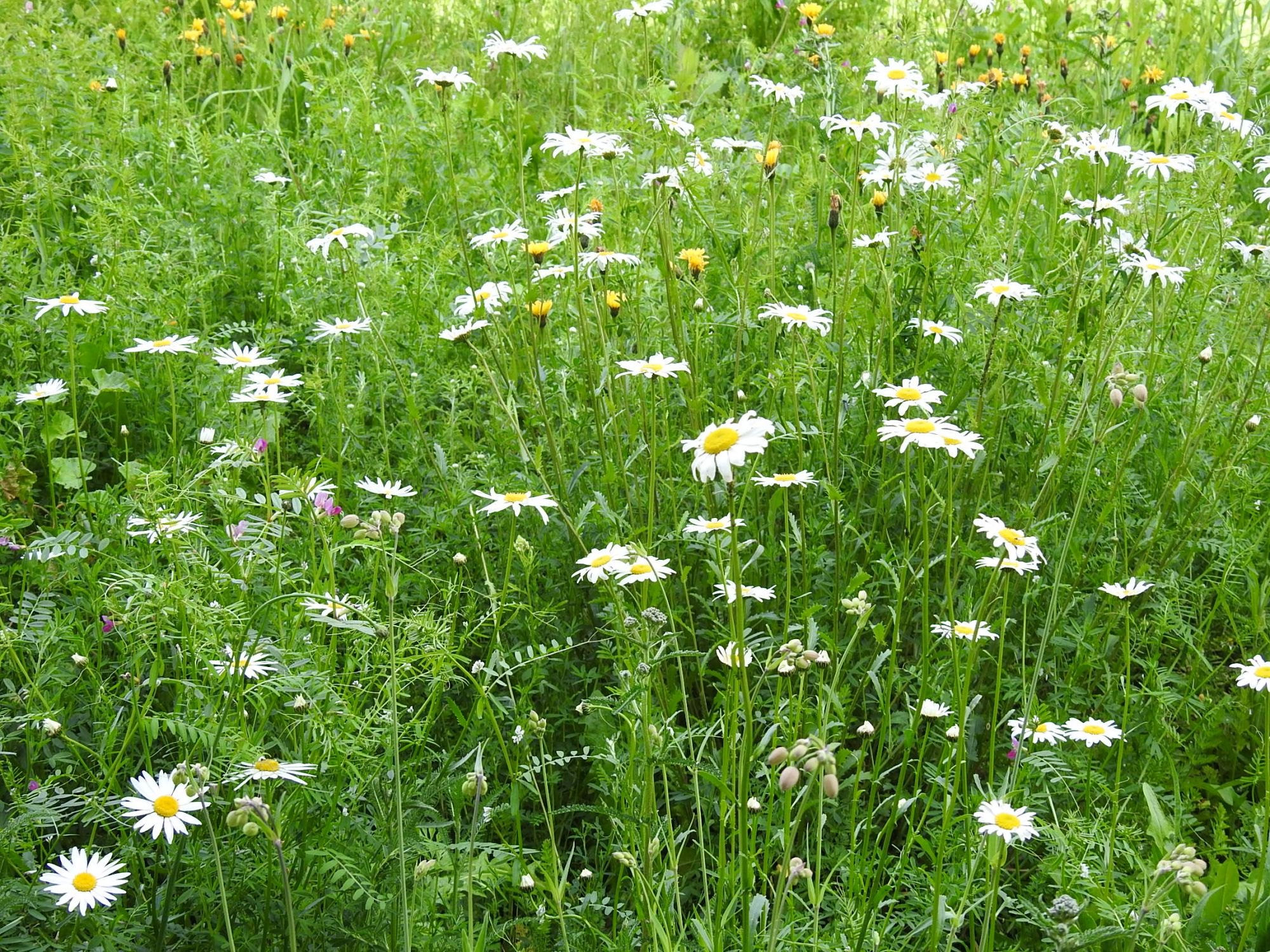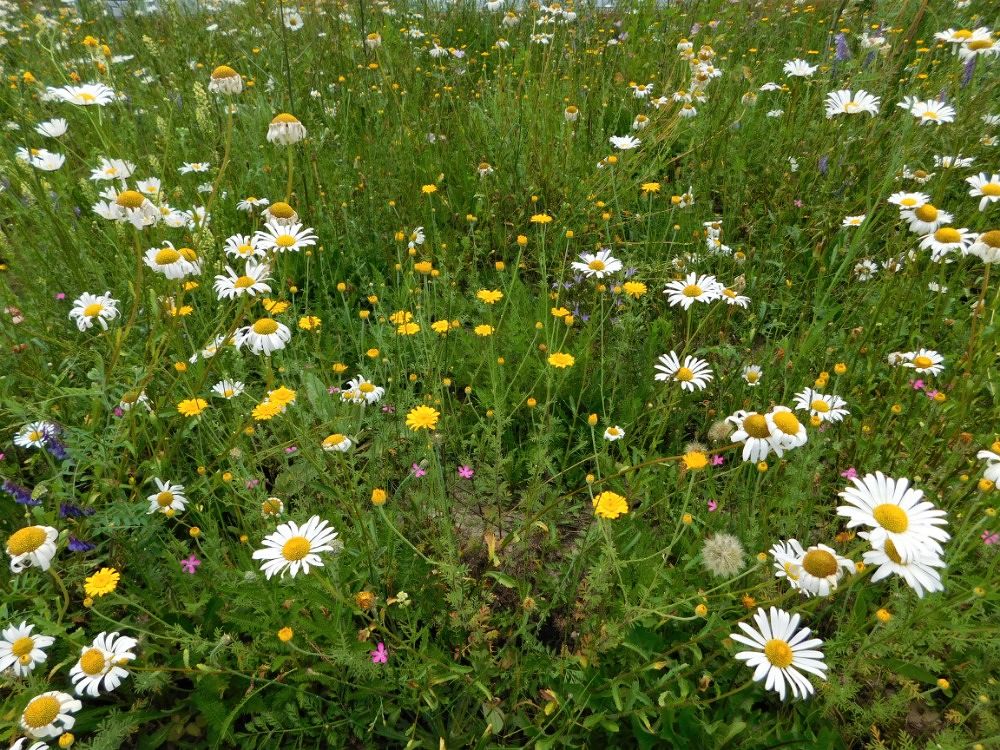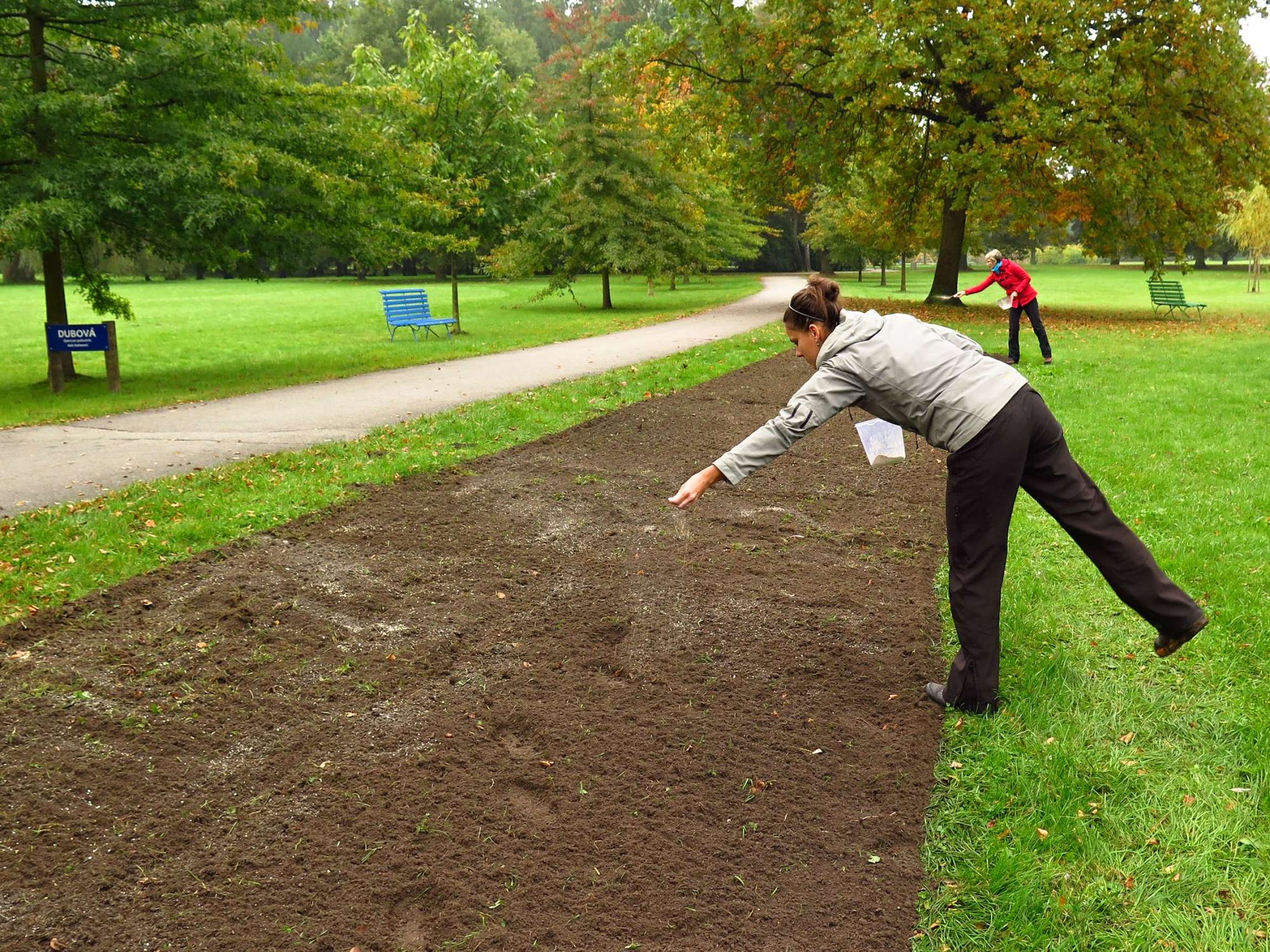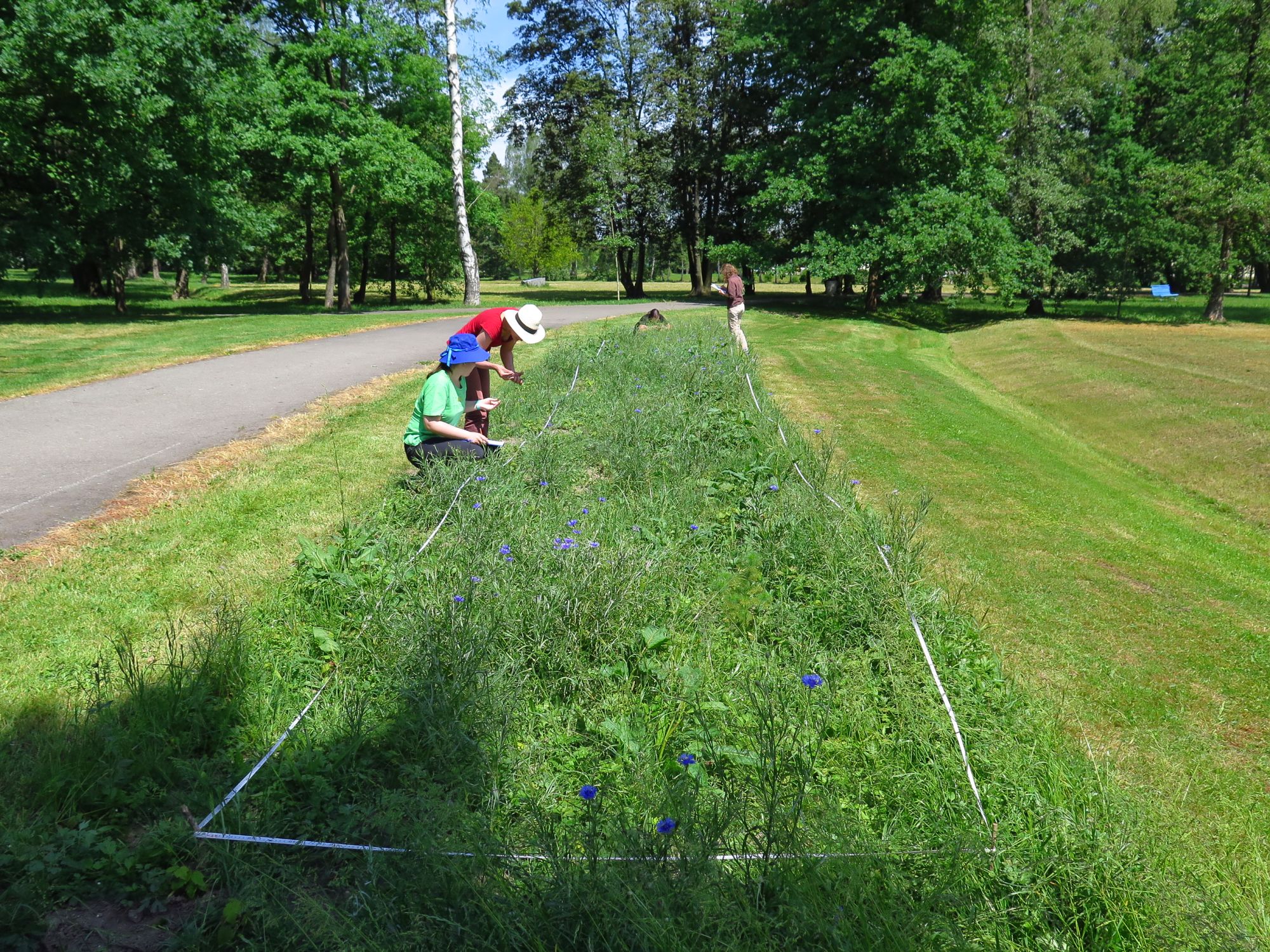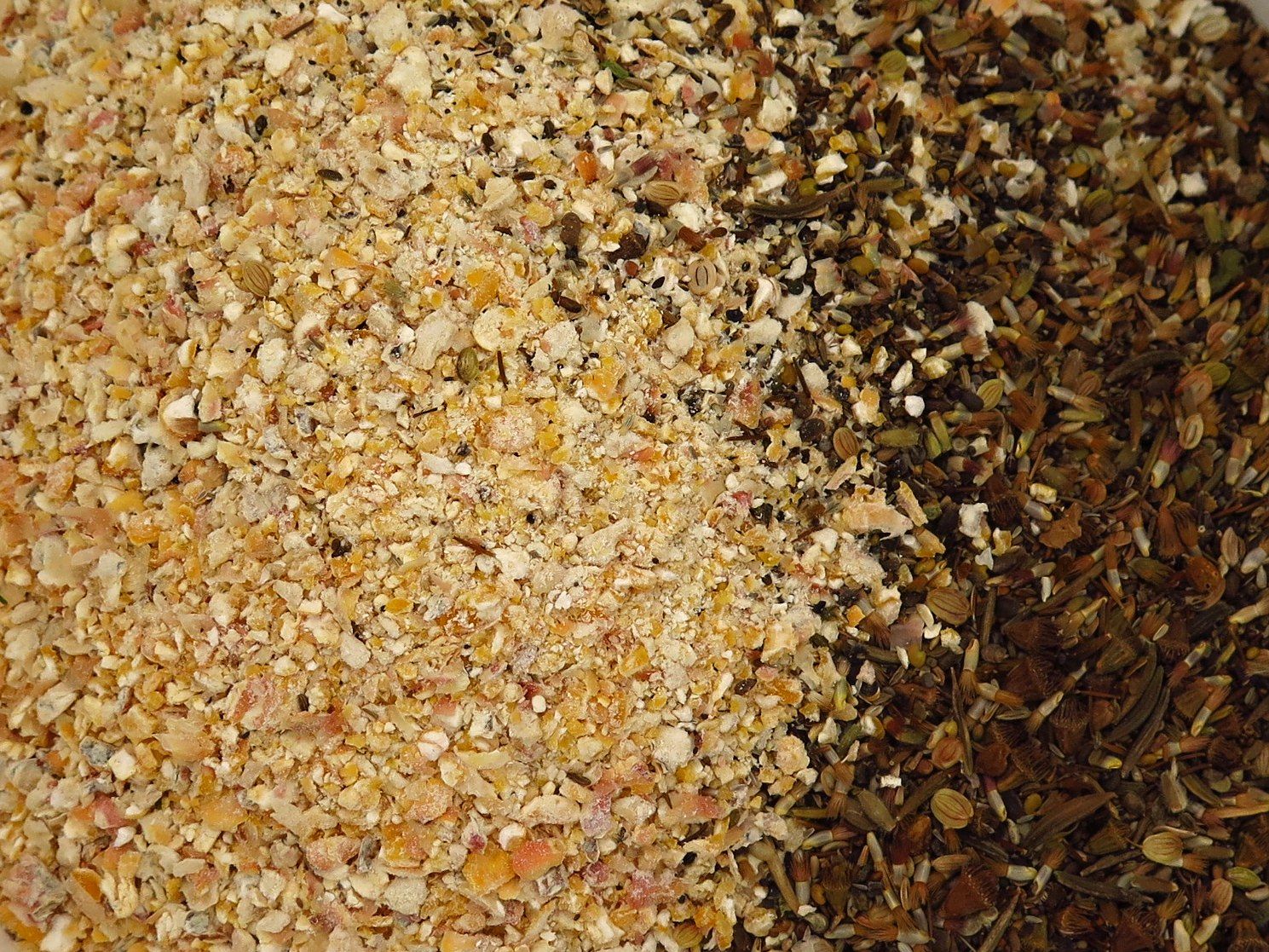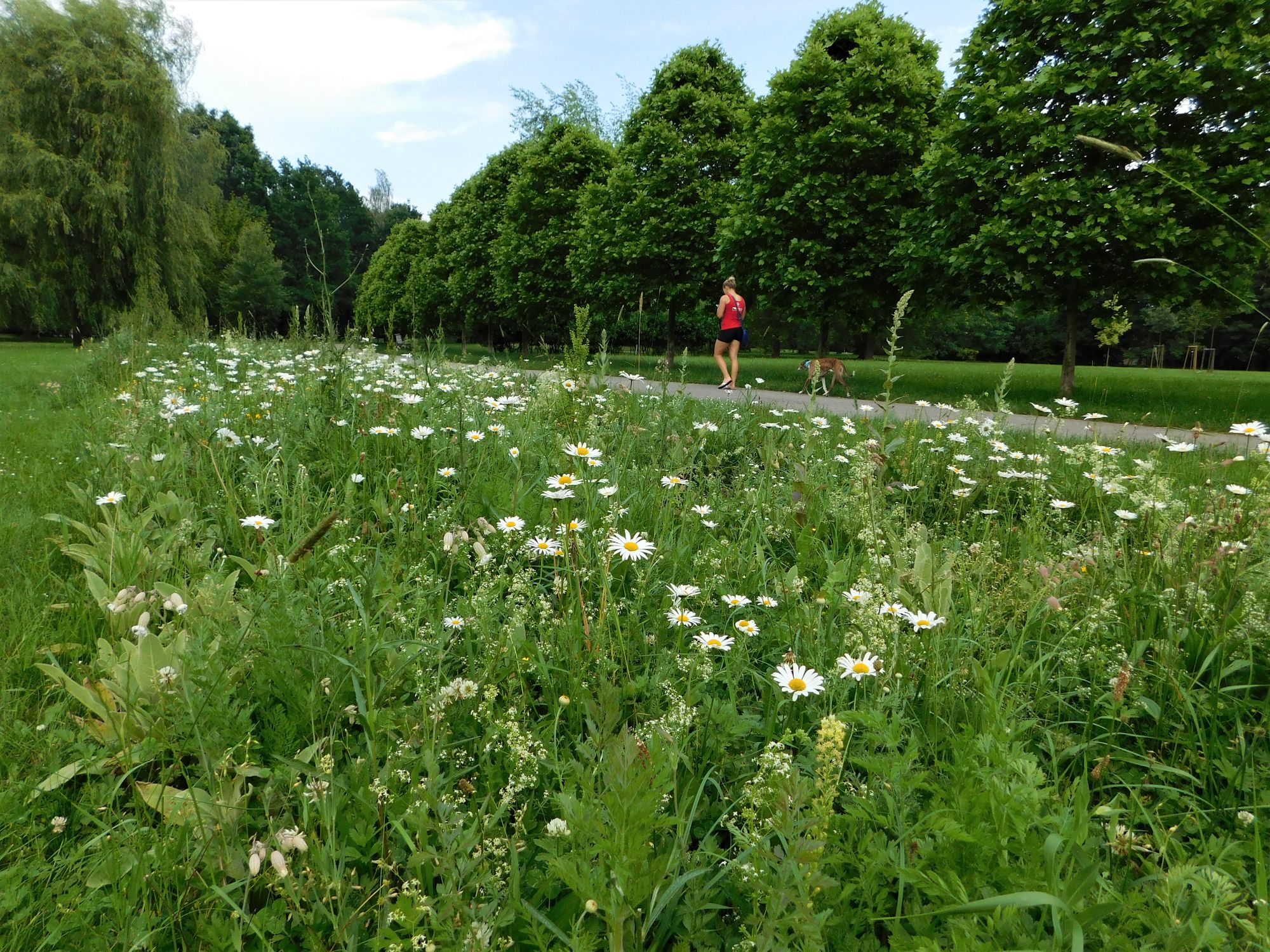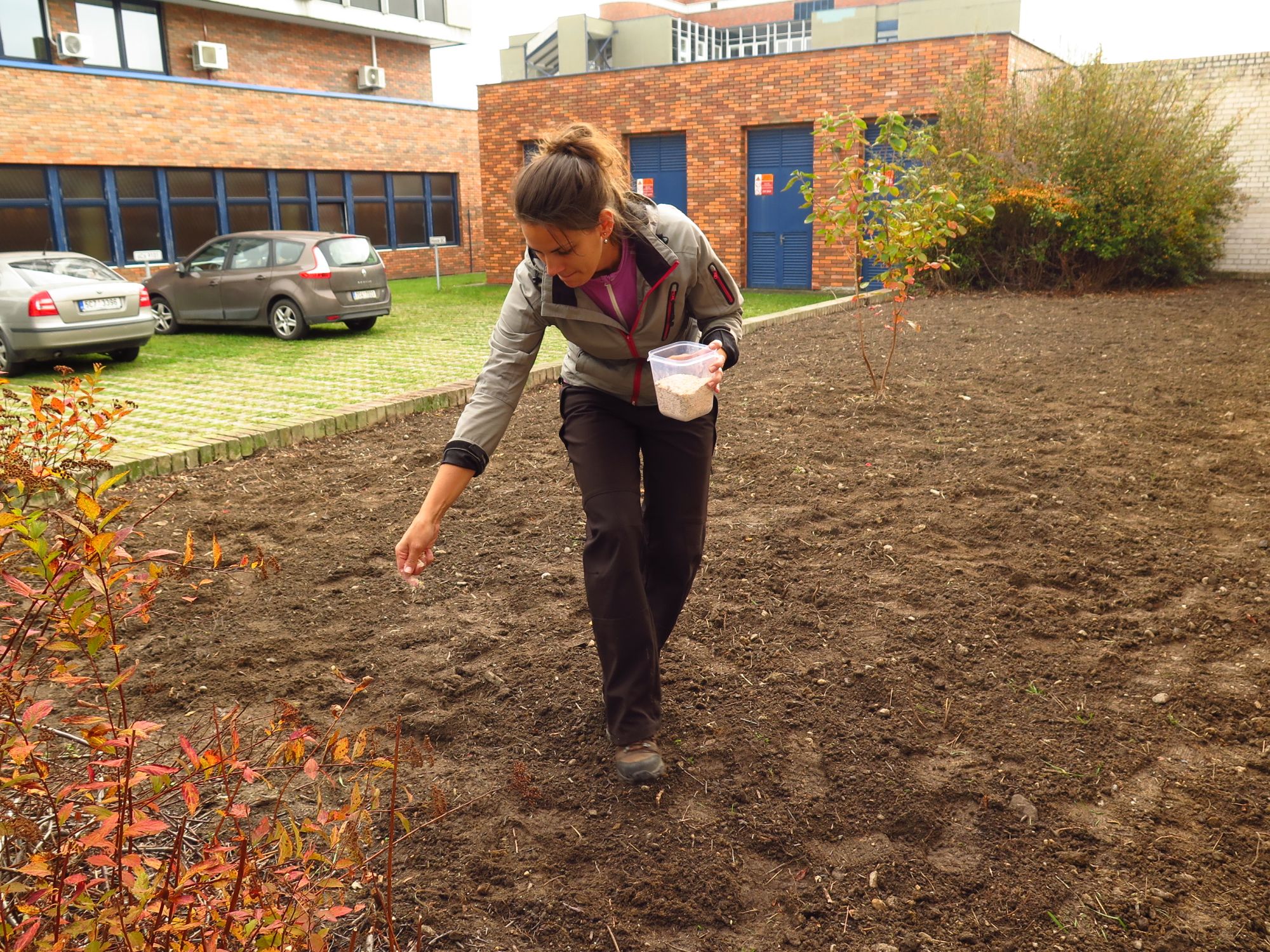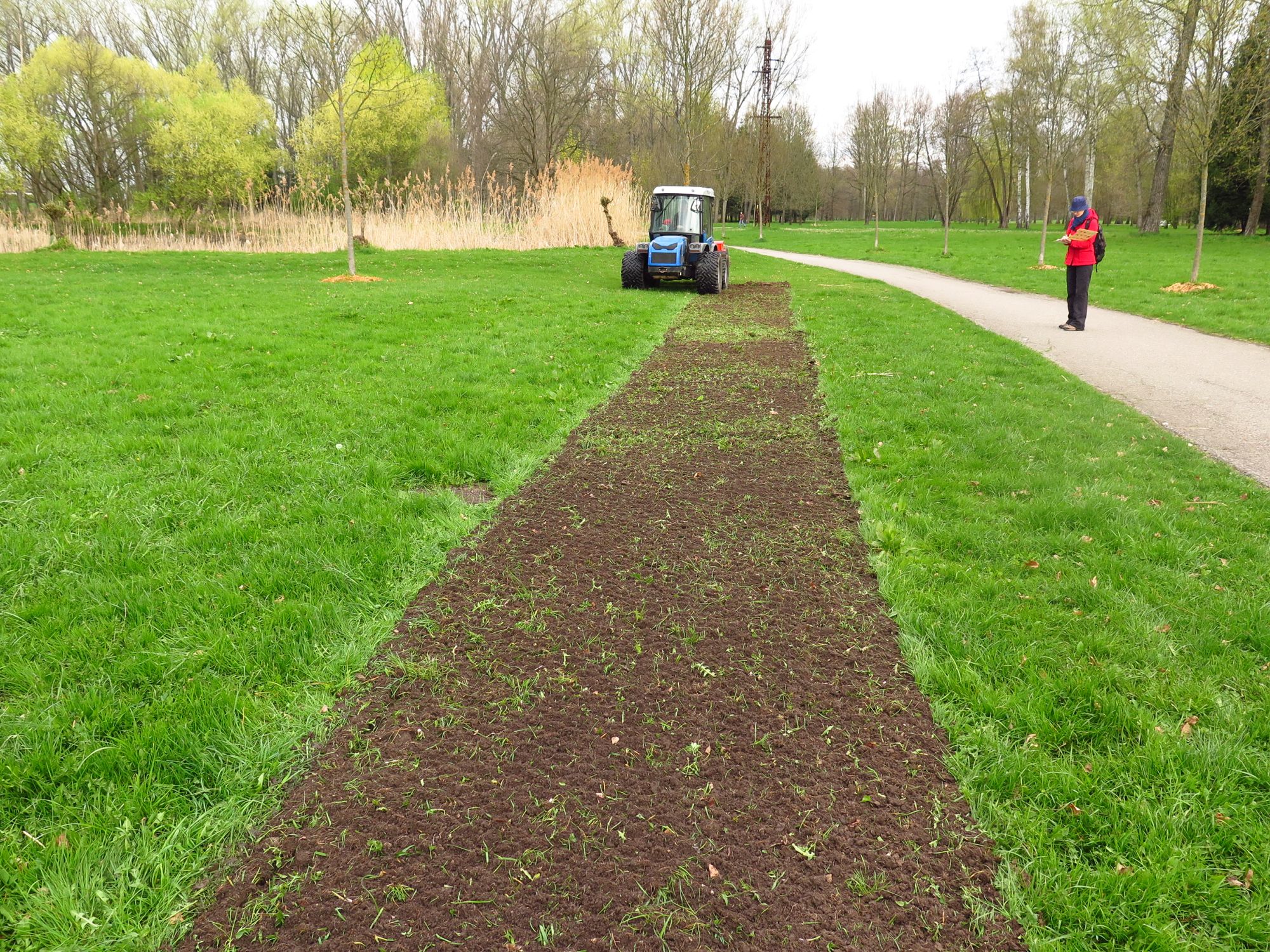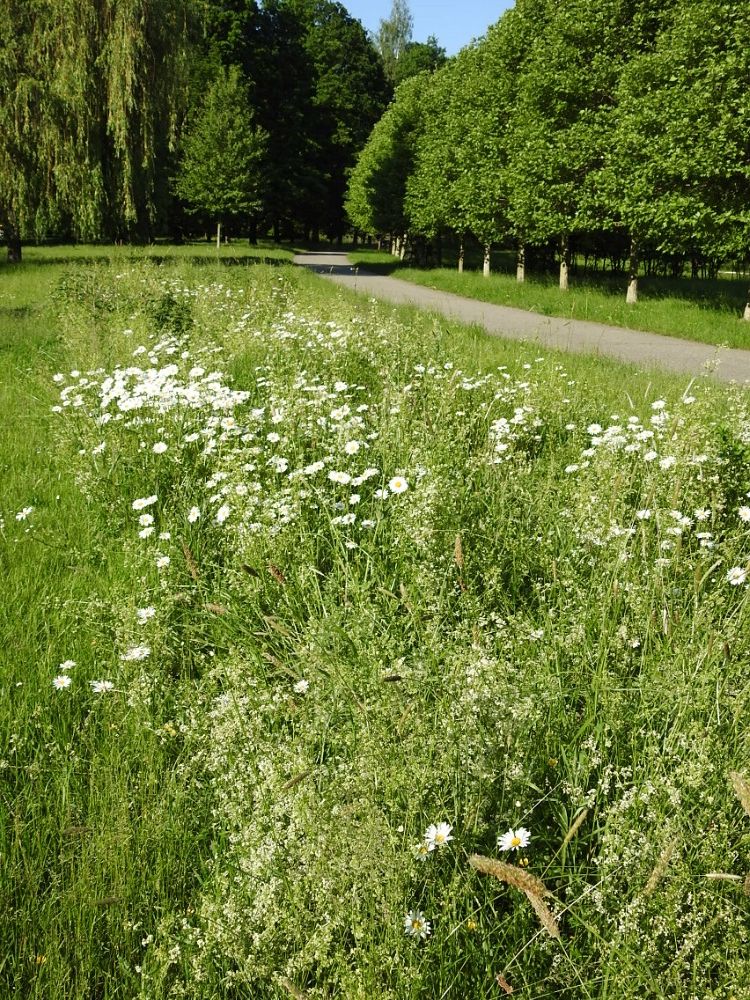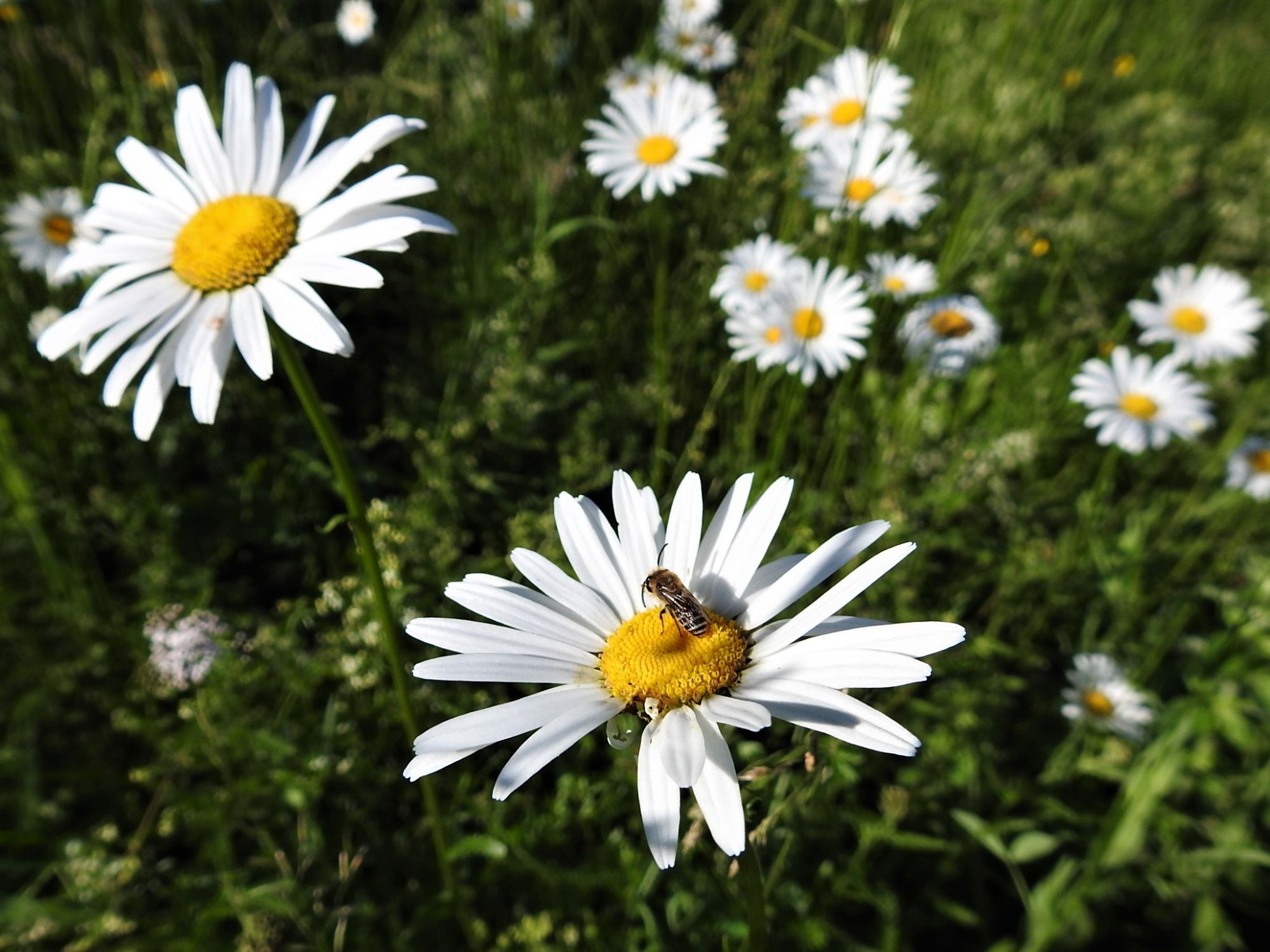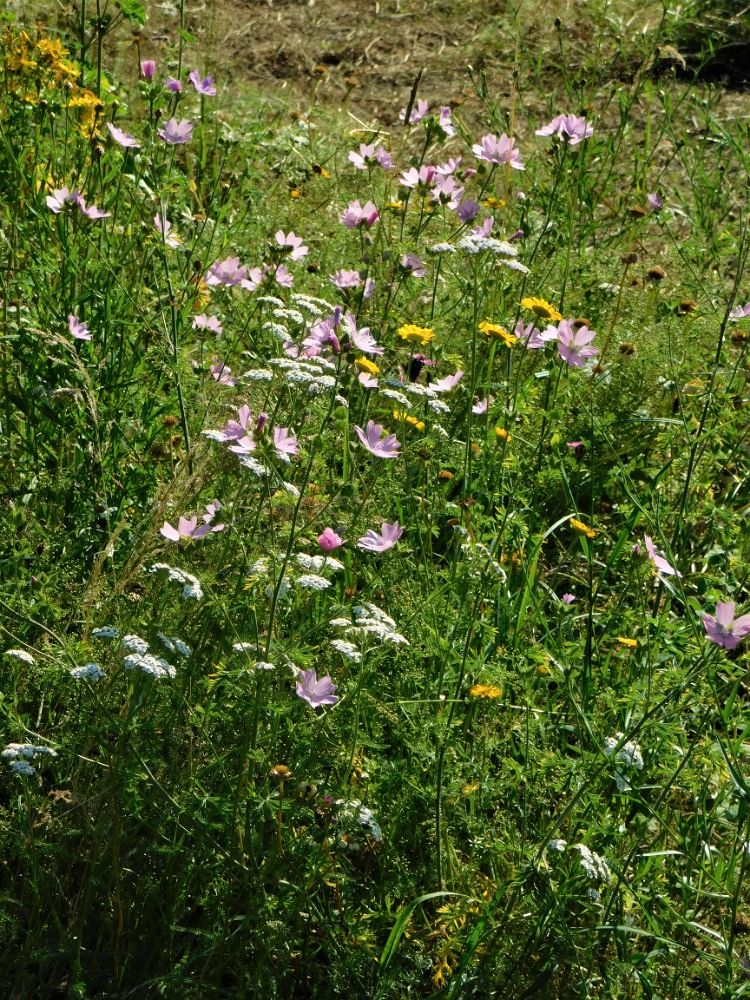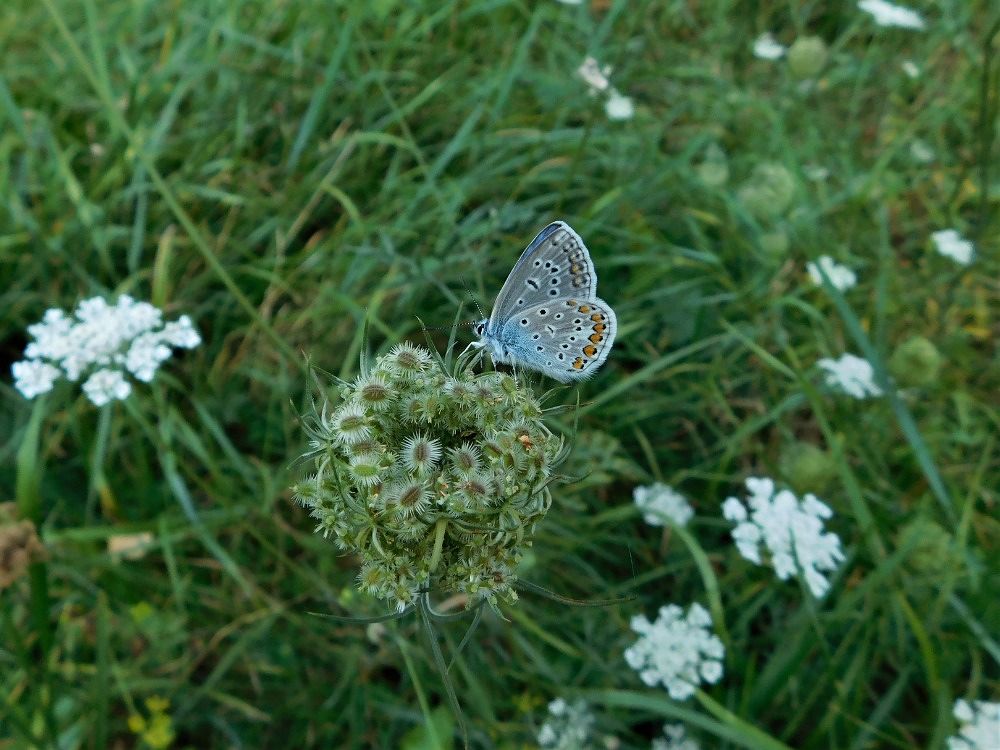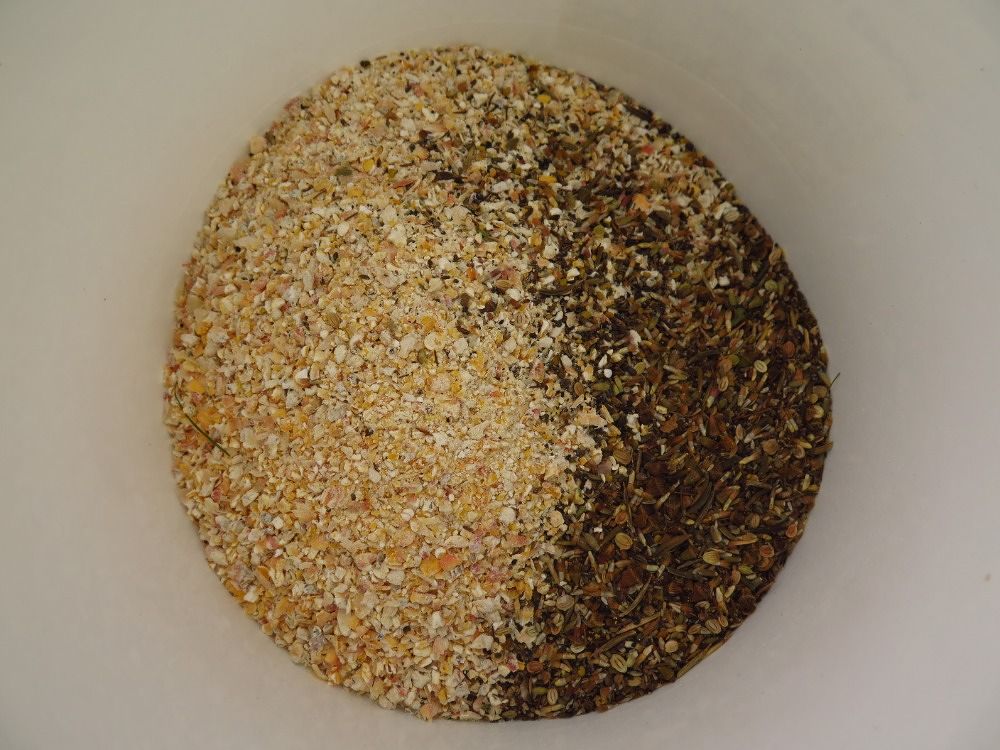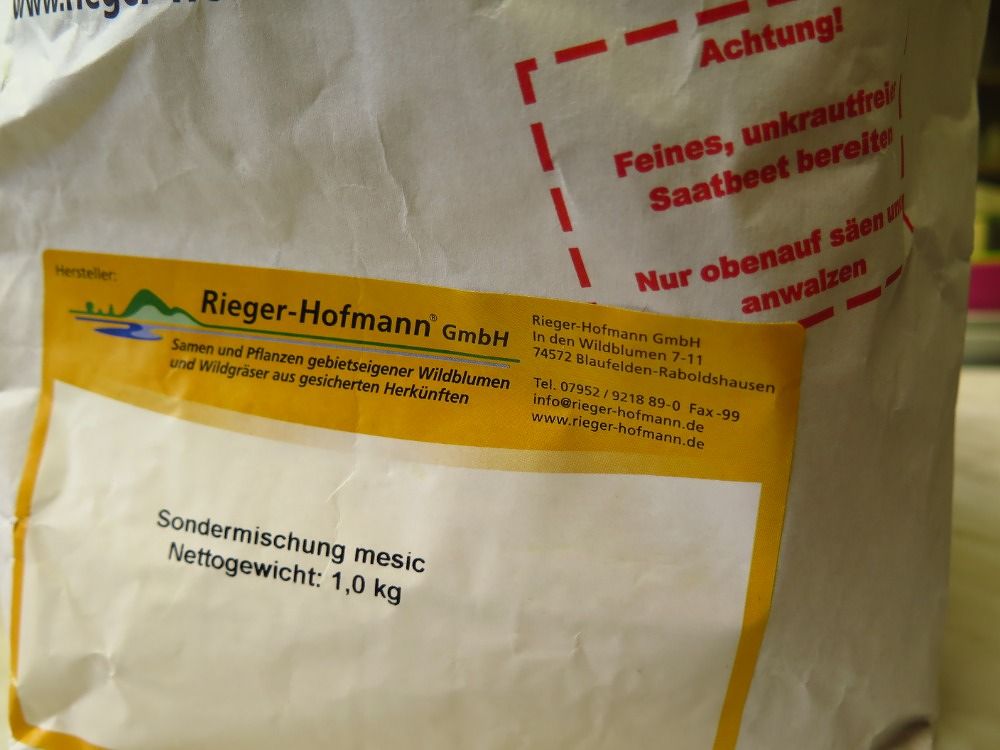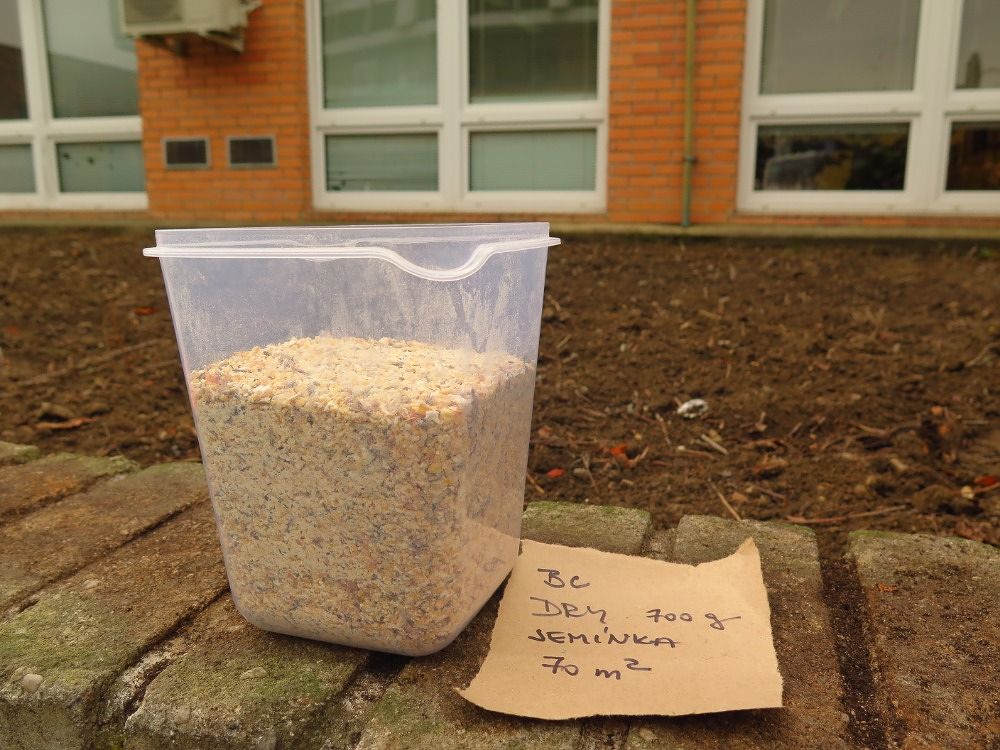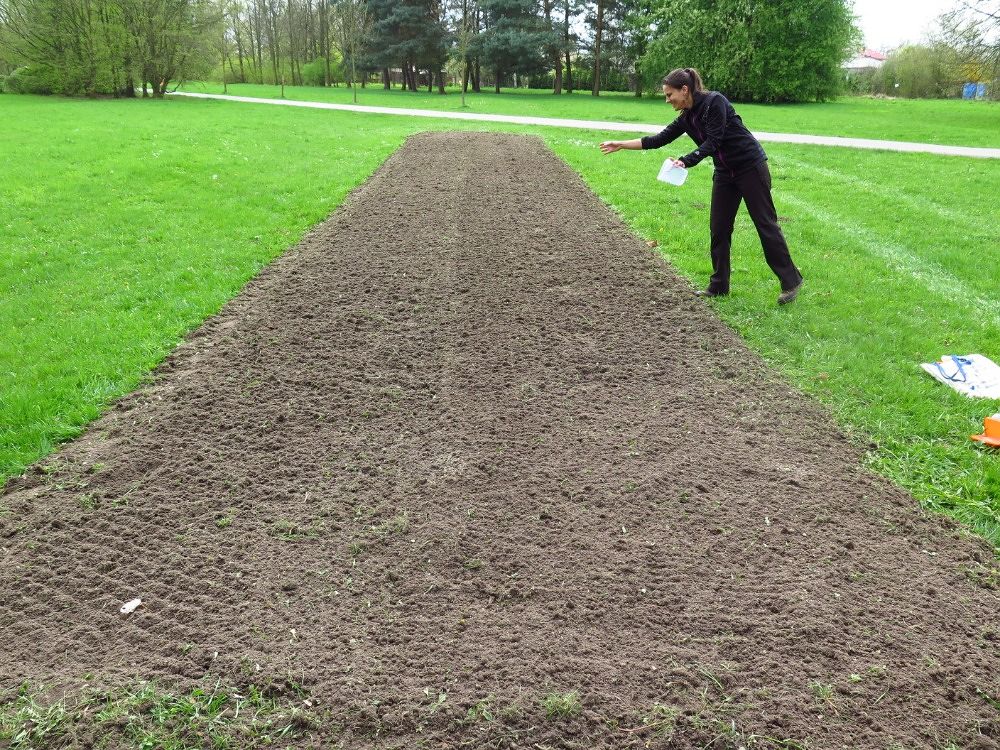Flowering strips
 In the past, the cultural landscape was composed of a mosaic of various habitat types. Due to large-scale and intensive management, this fine-scaled structure almost disappeared from the current landscape. These changes affect not only endangered species but also species which were relatively common in the past. In many European countries, including the Czech Republic, there are efforts to increase species diversity both in the agricultural landscape (Jongepierová & Poková 2006; Kiehl et al. 2014; Kirmer et al. 2015) as well as in various man-made habitats such as road verges and surrounding of building constructions (Nordbakken et al. 2010; Conrad & Tischew 2011; Fischer et al. 2013), or in urban greenery. Creation of flowering strips may be a way to achieve this. Besides the aesthetic aspect, these species-rich flowering strips also increase the diversity of butterflies and other insects for which they can provide alternative habitats.
In the past, the cultural landscape was composed of a mosaic of various habitat types. Due to large-scale and intensive management, this fine-scaled structure almost disappeared from the current landscape. These changes affect not only endangered species but also species which were relatively common in the past. In many European countries, including the Czech Republic, there are efforts to increase species diversity both in the agricultural landscape (Jongepierová & Poková 2006; Kiehl et al. 2014; Kirmer et al. 2015) as well as in various man-made habitats such as road verges and surrounding of building constructions (Nordbakken et al. 2010; Conrad & Tischew 2011; Fischer et al. 2013), or in urban greenery. Creation of flowering strips may be a way to achieve this. Besides the aesthetic aspect, these species-rich flowering strips also increase the diversity of butterflies and other insects for which they can provide alternative habitats.
The seed mixtures can be of two types: (i) species-poor (commercial) mixtures consisting predominantly of grasses, which are mainly used to quickly cover the surface, for example on road verges and other easily eroded sites (Kirmer et al. 2012); (ii) a species-rich mixtures where there is a high proportion of herbs (Jongepierová & Poková 2006; Kiehl et al. 2014). It is, however, important that the sown species are not only typical for certain habitat type but also geographically indigenous (i.e. regional types of plants) (Jongepierová & Poková 2006; Kiehl et al. 2014). Especially the second condition is very difficult to ensure, though. In the Czech Republic, this condition could be met only in the White Carpathians (see Areas of interest "Restoration of Grasslands") and in the Moravian Karst. Seed mixtures composed of indigenous plant species exhibit higher cover and the species also survive longer than species from commercial seed mixtures, especially in places with unfavourable environmental conditions.
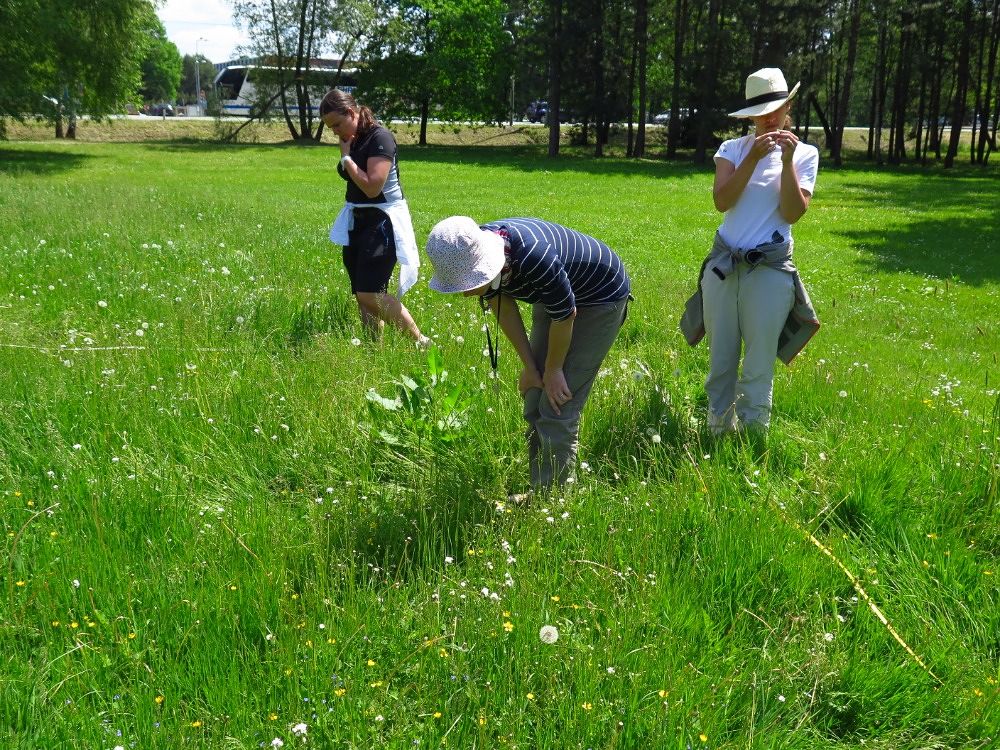 In cooperation with colleagues from Hochschule Anhalt in Germany, we designed a species-rich seed mixture and we established model flowering strips in České Budějovice in 2016. The seed mixtures take into account different types of substrate, moisture of the site or its insolation. We included only herbs in the seed mixtures because grasses are able to colonize the flowering strips spontaneously. Flowering strips should be permanent, flower throughout the vegetation season (roughly from April to September) and need as little maintenance as possible, except for regular mowing. The cut biomass must be removed to prevent the accumulation of nutrients in the soil and the expansion of competitively strong species (Kirmer et al. 2015). From the point of view of invertebrates, especially butterflies, it is desirable to leave part of the stand (up to about 10% of the area) uncut until next year. For more information on the establishment of species-rich flowering strips see the new GUIDELINES TO ESTABLISH FLOWER-RICH STRUCTURES IN URBAN AND RURAL AREAS (downloadable from here).
In cooperation with colleagues from Hochschule Anhalt in Germany, we designed a species-rich seed mixture and we established model flowering strips in České Budějovice in 2016. The seed mixtures take into account different types of substrate, moisture of the site or its insolation. We included only herbs in the seed mixtures because grasses are able to colonize the flowering strips spontaneously. Flowering strips should be permanent, flower throughout the vegetation season (roughly from April to September) and need as little maintenance as possible, except for regular mowing. The cut biomass must be removed to prevent the accumulation of nutrients in the soil and the expansion of competitively strong species (Kirmer et al. 2015). From the point of view of invertebrates, especially butterflies, it is desirable to leave part of the stand (up to about 10% of the area) uncut until next year. For more information on the establishment of species-rich flowering strips see the new GUIDELINES TO ESTABLISH FLOWER-RICH STRUCTURES IN URBAN AND RURAL AREAS (downloadable from here).
Model flowering strips
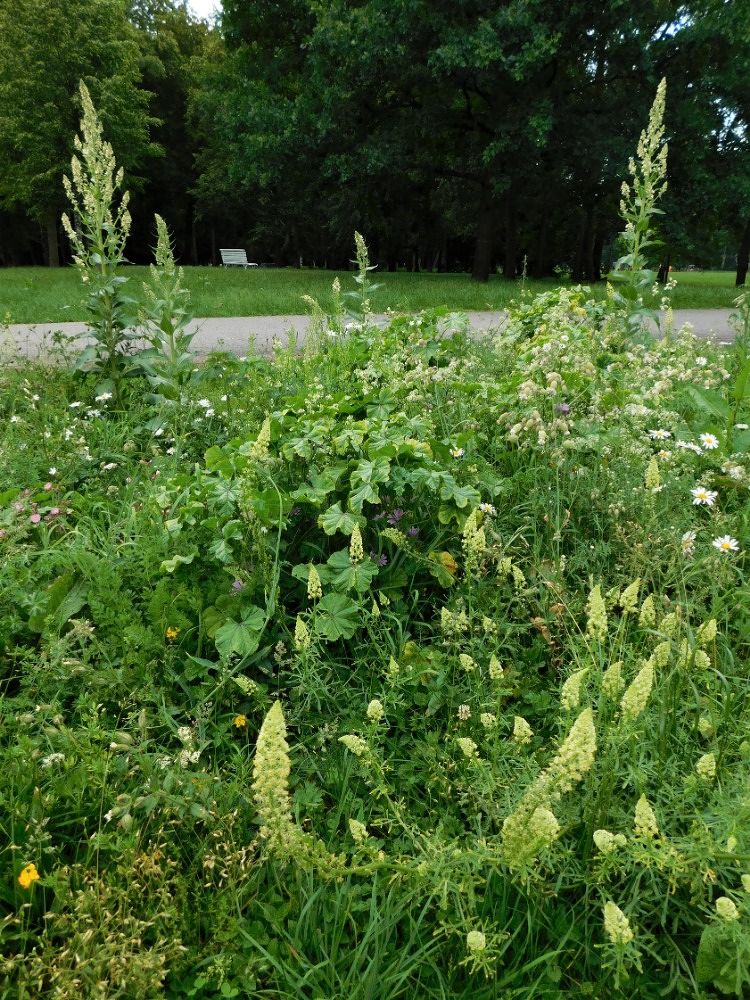 In autumn 2016 we established several flowering strips in the campus of the University of South Bohemia and Biology Centre CAS and in the Stromovka city park in České Budějovice. Seeds for the flowering strips came from Rieger-Hofmann GmbH. from Germany. They operate a network of farms for each of the regions of Germany. Seeds for our seed mixture originated from farms located closest to the Czech border. In this pilot study we test seed mixtures for two types of habitats (dry and sunny, wetter and shady). The surrounding lawns, sown with a standard commercial grass mixture, one near each flowering strip, serve as control plots. Using repeated vegetation records (list of all higher plant species on a given area and estimation of their cover, estimation of cover of individual vegetation layers, two times during the season) and entomological survey (pitfall traps, yellow pan traps, sweeping) of selected groups (wasps and bees, butterflies, beetles) we record species richness of selected indicator groups, but also their changes during the vegetation season. This observation allows us to gain an overview of what plant species are able to successfully establish on newly created habitats in urban landscape and provides us with information on the spectrum of invertebrates using flowering strips.
In autumn 2016 we established several flowering strips in the campus of the University of South Bohemia and Biology Centre CAS and in the Stromovka city park in České Budějovice. Seeds for the flowering strips came from Rieger-Hofmann GmbH. from Germany. They operate a network of farms for each of the regions of Germany. Seeds for our seed mixture originated from farms located closest to the Czech border. In this pilot study we test seed mixtures for two types of habitats (dry and sunny, wetter and shady). The surrounding lawns, sown with a standard commercial grass mixture, one near each flowering strip, serve as control plots. Using repeated vegetation records (list of all higher plant species on a given area and estimation of their cover, estimation of cover of individual vegetation layers, two times during the season) and entomological survey (pitfall traps, yellow pan traps, sweeping) of selected groups (wasps and bees, butterflies, beetles) we record species richness of selected indicator groups, but also their changes during the vegetation season. This observation allows us to gain an overview of what plant species are able to successfully establish on newly created habitats in urban landscape and provides us with information on the spectrum of invertebrates using flowering strips.
Preliminary results of the monitoring show that two years after the establishment of the strips, 90% of the planted species grew there and the number of Aculeata (Hymenoptera) and butterflies, which were chosen as target groups, increased up to five times compared to intensively mown surroundings. The most successful plant species included yarrow (Achillea millefolium), golden marguerite (Anthemis tinctoria), cornflower (Centaurea cyanus) and white mullein (Verbascum lychnitis).
